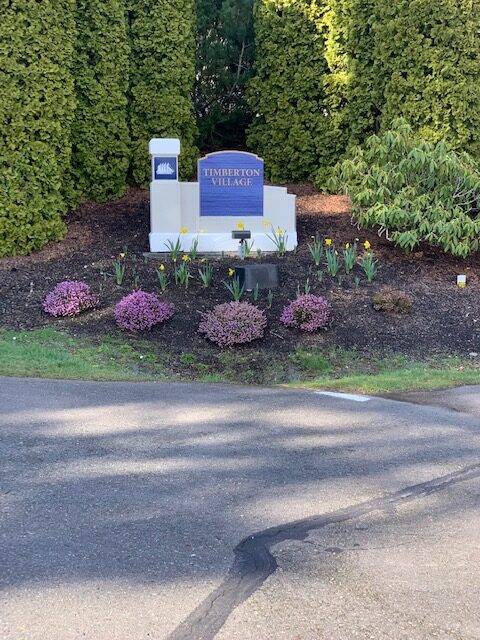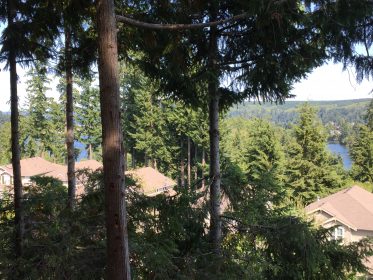 And now, they have bloomed – at least on the north side.
And now, they have bloomed – at least on the north side.
The ones on the south side are close to blooming, according to resident experts.
Thanks to all that played in the dirt last year!
 And now, they have bloomed – at least on the north side.
And now, they have bloomed – at least on the north side.
The ones on the south side are close to blooming, according to resident experts.
Thanks to all that played in the dirt last year!
Monday September 27 – 5:30 / 6:30 PM
BAY CLUB CONFERENCE ROOM *
*NOTE: Covid Restriction Rules Imposed:
Board Meeting Agenda: TVHA September 27, 2021 Board Meeting AGENDA
Vegetation Committee Docs
Agenda here (TVHA BOARD SPECIAL MEETING AGENDA NOVEMBER 2, 2020).
Message from the board about this meeting:
Hello All,
We are having a special meeting November 2nd, 2020.
MONDAY, NOVEMBER 2, 2020 3PM ZOOM LINK:
https://us02web.zoom.us/j/
Meeting will be open at 2:30pm.
1. Call to order & determination of quorum.
2. Approve Agenda
3. Purpose of the meeting:
Recommendation: Approve the use of $6,540 in one-time contingency to be appropriated to the VMC, Land and Capital Improvements budget line for the purpose of clearing brush from the west side of Timberton Drive to enhance the main drive into our village.
Background: The clearing of brush would include approximately 400’ long (according to Google Earth) and various widths, to be similar in appearance to the east side of Timberton Drive. There is a rock retaining wall hidden in the brush, if exposed would greatly improve the appearance of the area. The scope of work would include removing black berry bushes, some of which are entangled in some nice trees and bushes. Certain alders would be removed, and others thinned. The project would enhance the appearance of the common area which all residents see as they travel Timberton Dr. Two bids were obtained and the lesser bid was from our current landscaper, GreenState Landscaping.
Financial impact: Use of $6,540 in one-time expense funded with one-time contingency. Ongoing annual maintenance costs, beginning in fiscal year 2021-22, would be budgeted in the Grounds Maintenance budget line by reducing available VMC, Land and Capital Improvement and increasing Grounds Maintenance by the anticipated $960 as proposed in the bid by GreenState Landscaping. No additional increase in dues is anticipated based on this recommendation.
4. The time and date of the next regular Board meeting is December 14th, 2020 at 5:30 pm at the top of the Trail & ZOOM.
5. Adjourn
If you are not able to attend the meeting at 3:00pm on November 2nd , please send your comments using the Contact the Board under the Contact Tab at www.timberton.org.
Below is addition information for ZOOM:
Join Zoom Meeting
https://us02web.zoom.us/j/
Meeting ID: 817 5629 2996
Passcode: 339305
One tap mobile
+12532158782,,81756292996#,,,,
+13462487799,,81756292996#,,,,
Dial by your location
+1 253 215 8782 US (Tacoma)
+1 346 248 7799 US (Houston)
+1 669 900 6833 US (San Jose)
+1 929 205 6099 US (New York)
+1 301 715 8592 US (Germantown)
+1 312 626 6799 US (Chicago)
Meeting ID: 817 5629 2996
Passcode: 339305
Find your local number: https://us02web.zoom.us/u/


The Vegetation Management Committee has cleaned up the trail to the gazebo, repaired a few gazebo posts, and put up a trail marker at the beginning of the trail.
From the Seattle Department of Transportation-
It’s that time of year again: Yes, we’re facing the return of the Western tent caterpillars. Their unsightly nests clutter trees, shrubs, providing them protection from predators ( birds and bats, to name a couple), as they happily munch away. The creatures, also known as Malacosoma californium , hatch in the spring when new buds are forming and spin their webs on tree branches and shrubs.
As recently noted in the local print and broadcast media, Seattle and Puget Sound regions have experienced an increase in recent years in the Western tent caterpillar population. Populations change from year to year-they can be high for several years then become very low. The good news is that a healthy tree or shrub can generally tolerate a total defoliation without suffering permanent damage. The bad news is that in years with high populations, these critters can be a real nuisance.
The Life Cycle
The egg masses are visible in winter, are grayish-brown and about one inch long. As soon as the eggs hatch in April or May, the caterpillars begin eating leaves and create “tents” – white, silky shelters that cover the forks and tips of tree branches and shrubs. They feed during the daylight and return to their tents at night.
The caterpillars are easy to recognize. They have a yellow checkered pattern with a blue dotted line down their backs, and can be three inches long when mature. The caterpillars molt four times over a period of five or six weeks, then stop eating. They choose a place to spin a cocoon and lay their eggs, and moths emerge about two weeks later. The adult moths mate immediately, lay eggs, and die a few days later; the eggs winter over until spring, when the whole process begins again.
What to Do
Many city departments use an Integrated Pest Management (IPM) approach when dealing with Western Ten Caterpillars. Control measures are only considered when population levels are extremely high, and other factors such as high public use combine to make control necessary. In those cases, mechanical means such as hand pruning or picking the webs from branches are used. Chemical controls for tent caterpillars are not used as they may be harmful to beneficial insects and birds.
While unpleasant creatures, they are not harmful to people. Natural predators include many garden birds, wasps and ground beetles. Homeowners who see infestations on their property should watch the number of tents forming and monitor the leaf damage.
Individual tents can be removed by pruning in the early morning and evening when the temperature is cool and caterpillars are inside them ( a pole pruner is useful for high branches). Put pruned nests in a bucket of soapy water or seal them in a plastic bag and crush it. Do not remove large branches or perform excessive pruning as a means of caterpillar control- you may do more damage to the tree by pruning than the caterpillars would do by defoliating the branches.
To view pictures of Malacosoma californium copy and paste the following link into your browser.